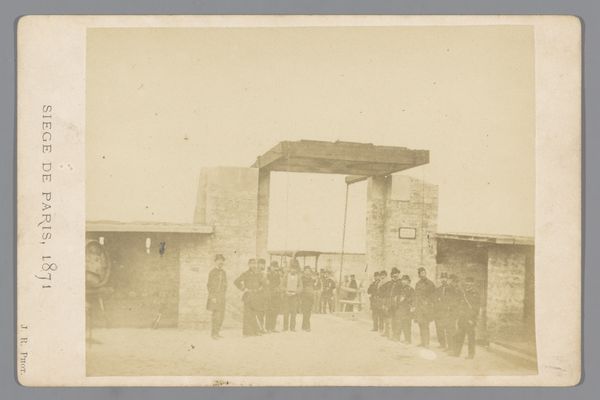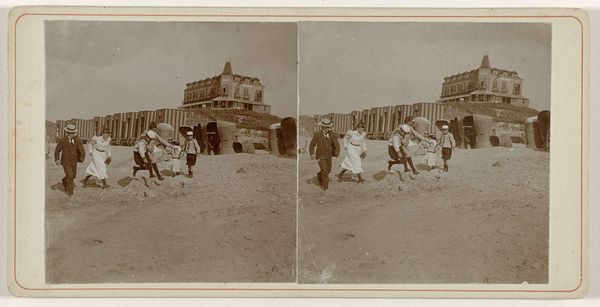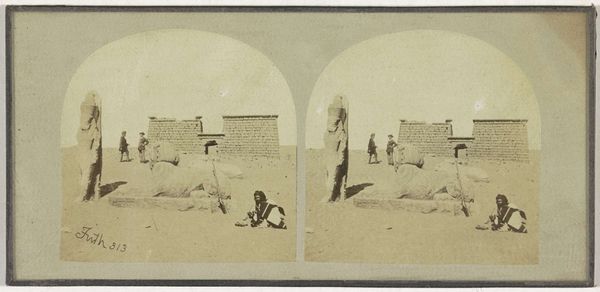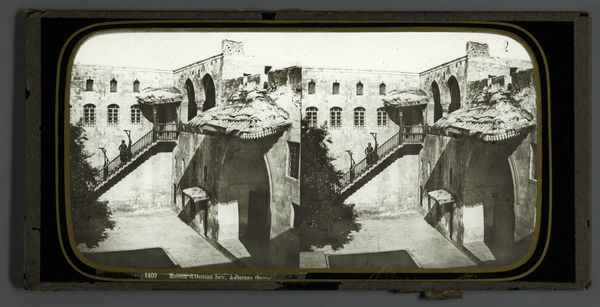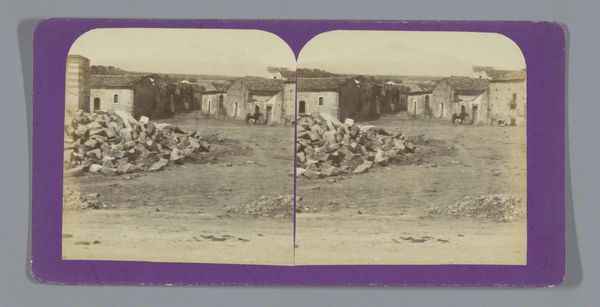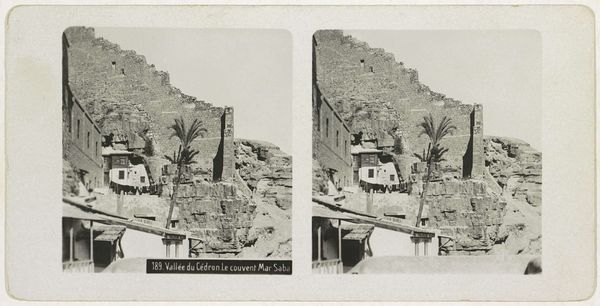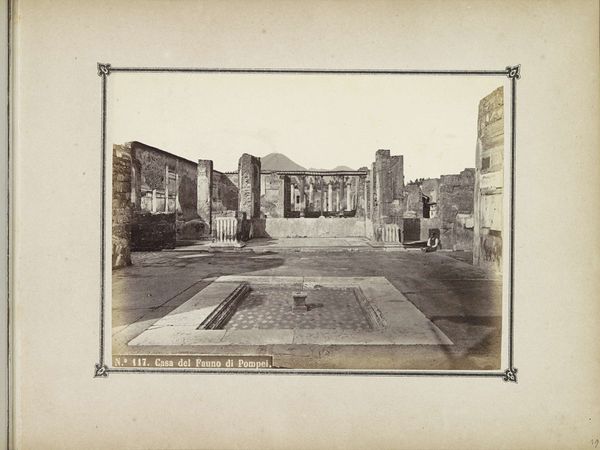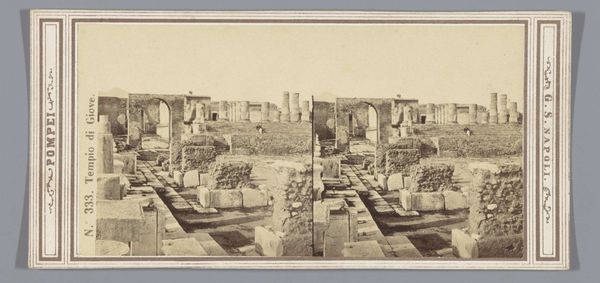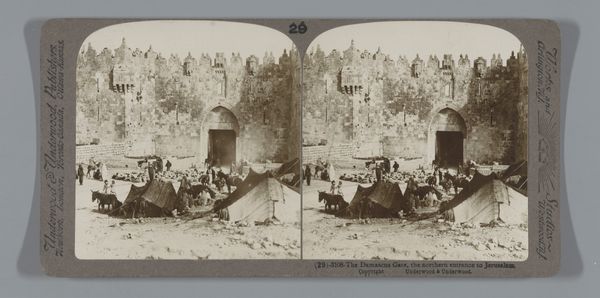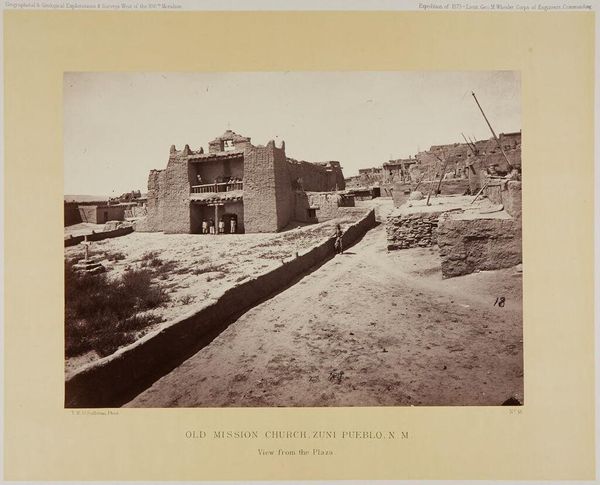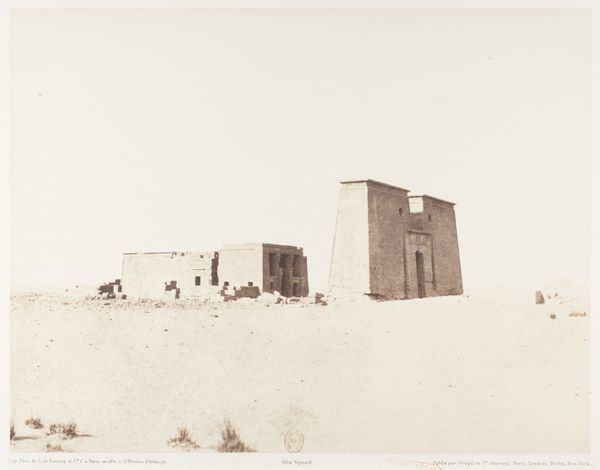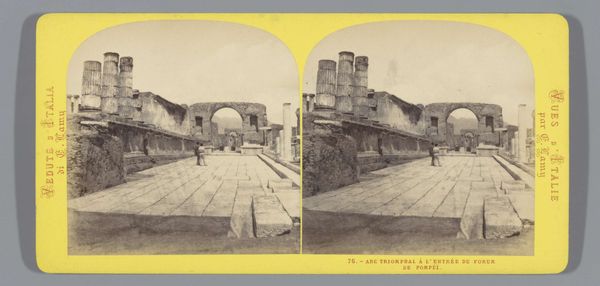
daguerreotype, photography, architecture
#
sculpture
#
landscape
#
daguerreotype
#
ancient-egyptian-art
#
photography
#
ancient-mediterranean
#
architecture
Dimensions: height 75 mm, width 150 mm
Copyright: Rijks Museum: Open Domain
Curator: Francis Frith’s stereoscopic daguerreotype, "Tempel van Dakka," created circa 1858 to 1862, offers a striking view of the Temple of Dakka in Nubia, Egypt. What is your immediate reaction to this piece? Editor: Stark. Almost desolate. The high contrast emphasizes the crumbling architecture against the expansive, empty landscape. There's an eerie stillness to it. And a man dressed in formal attire? He seems utterly out of place against the ancient monumentality. Curator: Exactly. Frith wasn't just capturing a scene; he was documenting and, to some extent, constructing a narrative for a Western audience hungry for images of the 'exotic' East. His photographs, like this one, circulated widely, shaping perceptions of ancient cultures and colonial power dynamics. Editor: The presence of a European figure makes that dynamic particularly evident. Is he meant to symbolize dominance, possession even, amid the historical landscape? This reinforces a sense of looking, not experiencing or understanding. I wonder what local people thought about the intrusion of colonial forces represented through images like this. Curator: It's important to remember photography’s role in solidifying these narratives of domination and difference during the colonial era. Frith benefitted from an established colonial project, and this image naturalizes the relationship. Editor: It prompts contemplation about who controls the historical narrative. Whose story gets told, and whose gets obscured by these meticulously framed images. Photography can create the "truth," especially one-sided depictions. Curator: Consider also the formal aspects; how the temple almost rises organically from the sands. It reflects the power and perceived permanence of this culture for western viewers. But seeing it today in the Rijksmuseum makes you reflect on what the long passage of time has really meant for the place Frith documented. Editor: A critical gaze makes me contemplate what aspects Frith's picture concealed and emphasized, especially during a period when racial dynamics in media often pushed negative perceptions toward non-Western culture and communities.
Comments
No comments
Be the first to comment and join the conversation on the ultimate creative platform.

